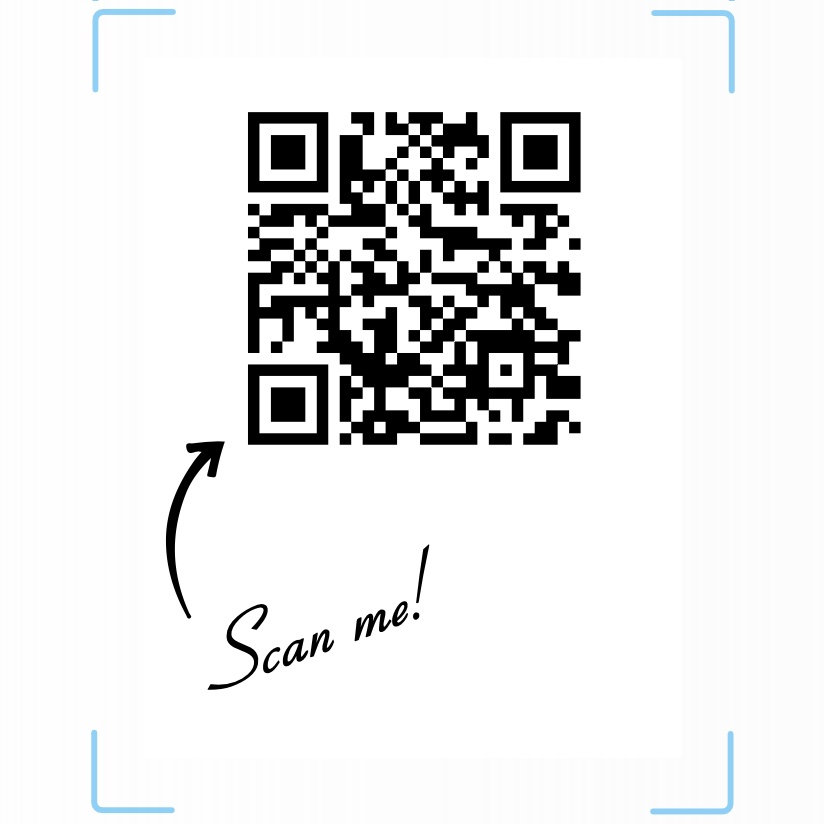In the late 1970s, barcodes were the new heroes of retail… they saved time, sanity, and cashier wrists by replacing manual entry with laser-fast recognition. These one-dimensional stripes… like black-and-white stormtroopers marching across a cereal box, encoded only a handful of digits but did so with the cold efficiency of Darth Vader’s filing system. They may not have wielded lightsabers, but their laser-scanned loyalty brought order to chaotic checkout aisles. Beyond supermarkets, NASA adopted barcode systems to track spacecraft parts and mission-critical tools, bringing terrestrial scanning tech to the stars.
Fast-forward to 1994 in Nagoya, where Masahiro Hara, inspired by the ancient strategy game Go, envisioned a two-dimensional upgrade to these linear codes. At Denso Wave he sketched three bold corner squares and dotted alignment markers across a blank grid, embracing Ma (間) – the Japanese appreciation of empty space as creative potential. By declaring QR codes open for all (no patents, thank you), Hara ensured that these data symphonies could hum freely across millions of pockets, packaging, and payloads.
Before QR, pioneers like PDF417 and DataMatrix experimented with stacked stripes and checkerboard modules, but they remained niche, relegated to the backs of shipping containers and lab specimens. QR codes, on the other hand, stood out with their simple Go‑board elegance and ruthless resilience. Thanks to built-in Reed‑Solomon error correction, up to 30 percent of a QR code can be scuffed, stickered over, or partially obliterated, and it will still perform its magic like a well-trained ninja retrieving a lost scroll.
Zooming in, a QR code reveals its true nature: a binary ballet. Your encoded text or link – transformed into ASCII bytes – zigzags through the matrix, guided by timing stripes and watched over by its trio of corner sentinels. These codes can carry numeric, alphanumeric, byte-based, or even Kanji data, scaling up to an astonishing 10⁵⁰ possible combinations. That’s not just big data… that’s cosmic data. Think of it as sonic white noise (#FFFFFF) in visual form.
But as with all magic, there’s a shadow side. That innocent café code might be a phishing trap in disguise, one overlay sticker, and suddenly you’re dialing into malwareville. Reed‑Solomon can’t save you from human gullibility, so always preview the destination. A slight misspelling – “bankofarnerica.com” – could be all it takes to separate you from your savings.
Beyond menus and marketing, QR codes now fuel space-age logistics. At SpaceX, these matrixed marvels are part of rocket assembly and maintenance workflows, free of course, unlike the blue check mark on X – ¥€$ that costs… scanned to log, verify, and trace components that may soon escape Earth’s gravity. In hospitals, QR codes link patient records to wristbands. In warehouses, they track car parts. On business cards, they provoke small talk and awkward camera fumbling. The future? Bio‑ink tattoos may turn us into walking QR codes, scanned for health data or VIP access.
And yet, there’s poetry in their grit. In the spirit of Wabi‑sabi, every scuffed, half‑peeled QR code carries a story: a restaurant’s rebrand, a pandemic’s makeshift signage, a guerrilla art stunt, or a fleeting moment of viral fame. These imperfect squares remind us of Mono no Aware… the gentle, bittersweet awareness that everything is transient, even tech.
So the next time you scan a QR code… on a billboard, a burrito wrapper, or maybe even your friend’s bicep… pause. Marvel at the nested cosmos inside, thank Reed‑Solomon for its sorcery, and consider the journey from stormtrooper stripes to pixel constellations. In our frictionless digital age, these humble grids remain portals to both possibility and poetry.
Author’s Note
If this made you itch to doodle grids on napkins, you’re channeling Kaizen – the quiet hunger to improve and tinker. If you’ve ever rubbed a worn code like a tiny oracle, that’s Mono no Aware whispering through the ink. And if you’re already picturing a QR tattoo with your blood type and playlist history, well-welcome to the age where analog hearts pulse in pixelated frames. Just remember: the best codes are the ones that still leave room for a little mystery.


Leave a Reply